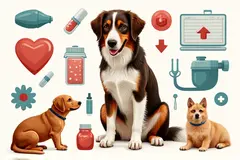 A condition in which the blood glucose level increases if too much insulin is given. It occurs when insulin causes the blood glucose level to go so low it stimulates the production of other hormones in the body such as epinephrine which promote the breakdown of glycogen (the chemical compound which... ↪ Read more
A condition in which the blood glucose level increases if too much insulin is given. It occurs when insulin causes the blood glucose level to go so low it stimulates the production of other hormones in the body such as epinephrine which promote the breakdown of glycogen (the chemical compound which... ↪ Read more Veterinary Drug Handbook (VDH) is the reference veterinarians turn to when they want an independent source of information on the drugs that are used in veterinary medicine today.
-
 Is veterinary Liniment Gel safe for humans?
Is veterinary Liniment Gel safe for humans? -
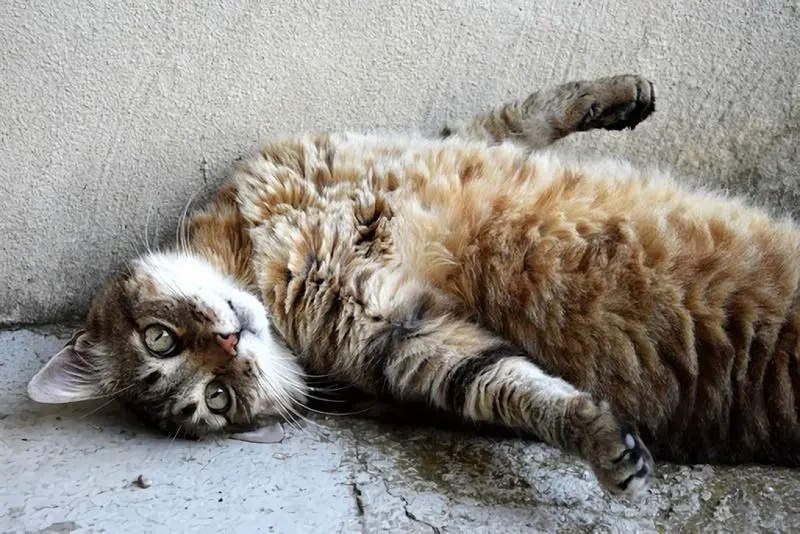 Giving Your Cat A Pill
Giving Your Cat A Pill -
 Dog Aggression
Dog Aggression -
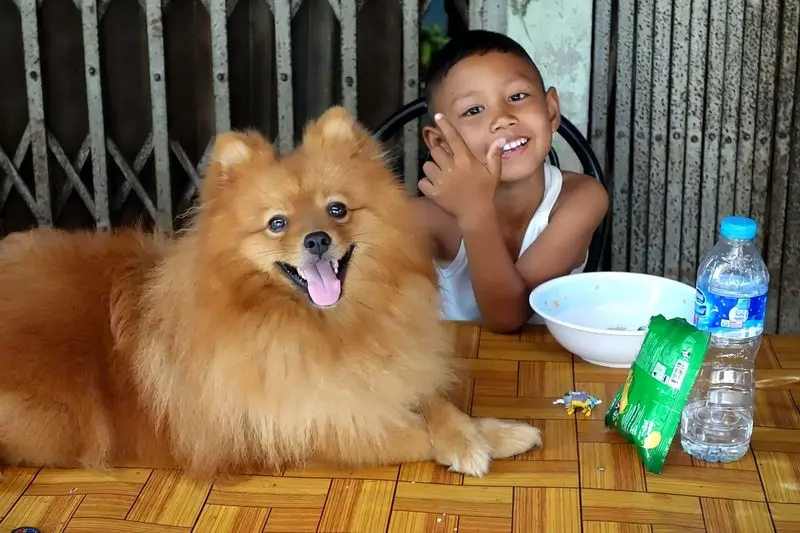 Dogs May Help Boost Infant Health
Dogs May Help Boost Infant Health -
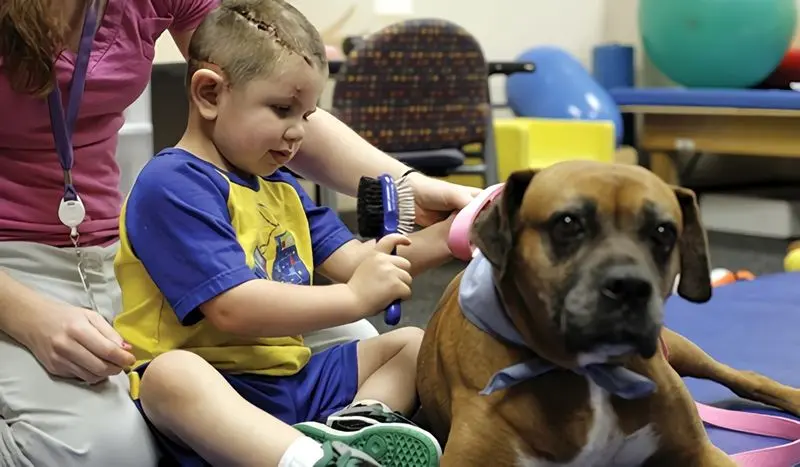 Animal-Assisted Therapy, Veterinary Social Work, & Social Work With People & Pets in Crisis
Animal-Assisted Therapy, Veterinary Social Work, & Social Work With People & Pets in Crisis -
 On-demand veterinary service gives advice on poorly pets
On-demand veterinary service gives advice on poorly pets -
 Should we stop throwing sticks for dogs?
Should we stop throwing sticks for dogs? -
 Can breathing in cat hair be harmful?
Can breathing in cat hair be harmful? -
 What does PU/PD mean in veterinary medicine?
What does PU/PD mean in veterinary medicine? -
 Bill calls for ban on sales of dogs, cats in Maine pet stores
Bill calls for ban on sales of dogs, cats in Maine pet stores -
 Common Meanings Of Cat Behavior
Common Meanings Of Cat Behavior -
 What does DVM stand for in veterinary?
What does DVM stand for in veterinary? -
 Curing Bad Cat Breath
Curing Bad Cat Breath -
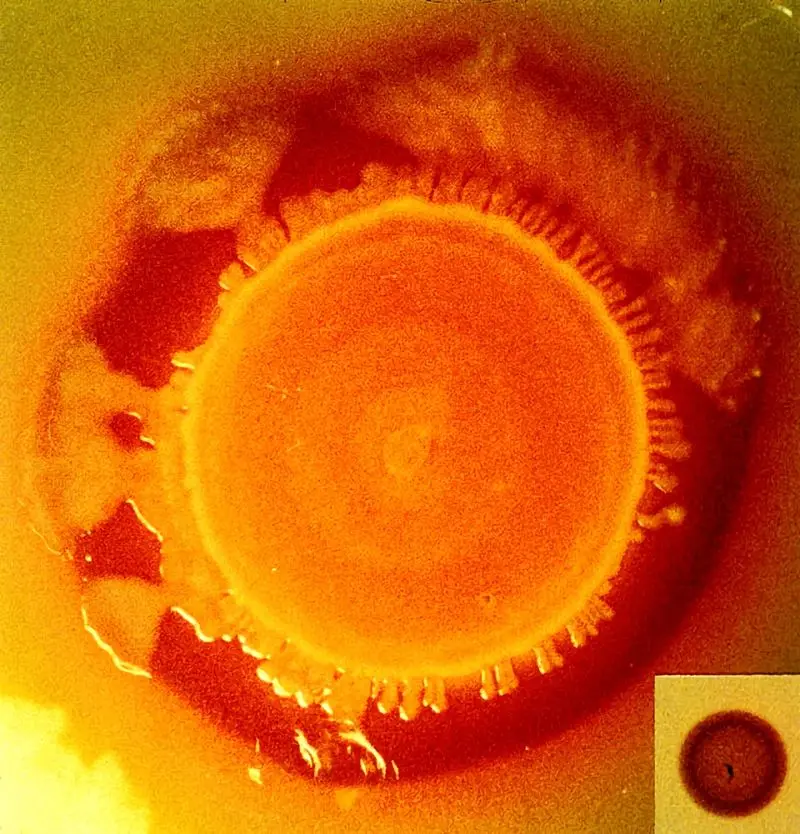 New Tracking Tool for Pathogen Investigators
New Tracking Tool for Pathogen Investigators -
Can binturongs be kept as pets?
-
 How long do instruments stay sterile after autoclaving veterinary?
How long do instruments stay sterile after autoclaving veterinary?
Somogyi effect
 A condition in which the blood glucose level increases if too much insulin is given. It occurs when insulin causes the blood glucose level to go so low it stimulates the production of other hormones in the body such as epinephrine which promote the breakdown of glycogen (the chemical compound which... ↪ Read more
A condition in which the blood glucose level increases if too much insulin is given. It occurs when insulin causes the blood glucose level to go so low it stimulates the production of other hormones in the body such as epinephrine which promote the breakdown of glycogen (the chemical compound which... ↪ Read more Smooth muscle
 The type of muscle found in the internal organs such as stomach and intestines (not the heart).... ↪ Read more
The type of muscle found in the internal organs such as stomach and intestines (not the heart).... ↪ Read more Shedding (of organisms)
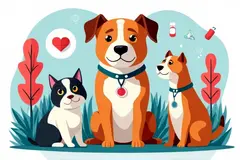 A term used to describe the release of organisms (bacteria, protozoa, viruses) into the environment from an infected animal. The organisms may be in the stool, urine, respiratory secretions, or vaginal discharges. The 'shedding' animal may or may not be showing symptoms of disease.... ↪ Read more
A term used to describe the release of organisms (bacteria, protozoa, viruses) into the environment from an infected animal. The organisms may be in the stool, urine, respiratory secretions, or vaginal discharges. The 'shedding' animal may or may not be showing symptoms of disease.... ↪ Read more Septic
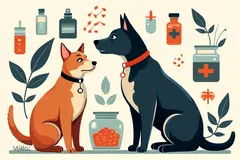 A condition caused by an infection e.g., with bacteria or fungi, or toxins they produce.... ↪ Read more
A condition caused by an infection e.g., with bacteria or fungi, or toxins they produce.... ↪ Read more Separation anxiety
 A behavioral condition in which the pet becomes anxious when separated from the owner. Dogs with separation anxiety tend to 'shadow' their owners, greet them exuberantly when they return after being gone, and sometimes vocalize, chew destructively, and urinate or defecate when separated from their... ↪ Read more
A behavioral condition in which the pet becomes anxious when separated from the owner. Dogs with separation anxiety tend to 'shadow' their owners, greet them exuberantly when they return after being gone, and sometimes vocalize, chew destructively, and urinate or defecate when separated from their... ↪ Read more Selective serotonin reuptake inhibitors (SSRIs)
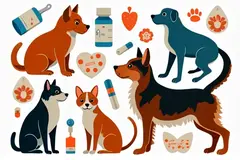 Medications which slow down the ability of nerve cells to absorb serotonin, a neurotransmitter (chemical that serves as a messenger between nerves). Example: Prozac.... ↪ Read more
Medications which slow down the ability of nerve cells to absorb serotonin, a neurotransmitter (chemical that serves as a messenger between nerves). Example: Prozac.... ↪ Read more Seizure threshold
 the level of stimulation at which a seizure is produced. Raising the seizure threshold makes it less likely a seizure will occur.... ↪ Read more
the level of stimulation at which a seizure is produced. Raising the seizure threshold makes it less likely a seizure will occur.... ↪ Read more Second generation
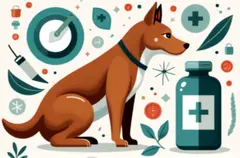 A description of medications developed from an earlier form of the medication. First generation medications were developed from the original form of the drug; second generation medications are adaptations of first generation drugs; third generation drugs are adaptations of second generation, etc.... ↪ Read more
A description of medications developed from an earlier form of the medication. First generation medications were developed from the original form of the drug; second generation medications are adaptations of first generation drugs; third generation drugs are adaptations of second generation, etc.... ↪ Read more Secondary response
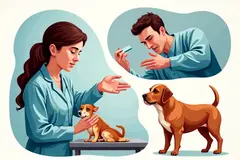 The faster and greater immune response produced by an animal who has previously encountered that specific antigen. Memory cells are responsible for this more efficient response. Also called 'anamnestic response'.... ↪ Read more
The faster and greater immune response produced by an animal who has previously encountered that specific antigen. Memory cells are responsible for this more efficient response. Also called 'anamnestic response'.... ↪ Read more Sebaceous adenitis
 Inflammation of a sebaceous (oil-producing) gland. In dogs, sebaceous glands are found on the top of the tail near its base, and at the junction of mucous membranes with skin. In cats, these glands are found on the chin, lip margins and the top of the tail. Inflammation of the sebaceous glands... ↪ Read more
Inflammation of a sebaceous (oil-producing) gland. In dogs, sebaceous glands are found on the top of the tail near its base, and at the junction of mucous membranes with skin. In cats, these glands are found on the chin, lip margins and the top of the tail. Inflammation of the sebaceous glands... ↪ Read more Sclerosis
Retina
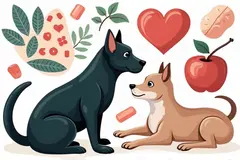 The rear interior surface of the eyeball is called the retina. The retina contains nerve cells referred to as rods and cones. The rods are sensitive to light and the cones to color. The retina receives the light and color and converts them into nerve impulses which go to the brain.... ↪ Read more
The rear interior surface of the eyeball is called the retina. The retina contains nerve cells referred to as rods and cones. The rods are sensitive to light and the cones to color. The retina receives the light and color and converts them into nerve impulses which go to the brain.... ↪ Read more Popular Diagnoses
Packed cell volume (PCV, hematocrit) Reflex ovulator Mucolytic Microfilaricide Bronchodilator Hematocrit Glucocorticoid Monoamine oxidase inhibitor (MAOI) ↪ All veterinary diagnoseOther Diagnoses
Phystochemical Phystoestrogen Placebo Plantigrade stance Plaque Platelets Polyarthritis PolydactylPopular Veterinary Clinics
VCA Welborn Animal Hospital, 7860 Washington Avenue Kansas City, KS 66112 USA MedVet Columbus, 300 East Wilson Bridge Road, Worthington, OH Rutland Veterinary Clinic & Surgical Center, 90 East Pittsford Road, Rutland, VT VCA Paradise Valley Emergency Animal Hospital, 6969 East Shea Boulevard Suite 150 Scottsdale, AZ 85254 USA Connecticut Veterinary Center & Pet ER, 470 Oakwood Ave West Hartford, CT 06110 USA Norway Veterinary Hospital, 10 Main St P.O. Box 273 Norway, ME 04268 USA Craig Road Animal Hospital, 5051 West Craig Road, Las Vegas, NV Abri Veterinary Hospital Inc, 1449 Trademart Boulevard Winston-Salem, NC 27127 USA ↪ All veterinary clinicsOther Veterinary Clinics
Sea Island Animal Hospital, 40 Professional Village Circle Beaufort, SC 29907 USA Burnham Park Animal Hospital, 1025 South State Street Chicago, IL 60605 USA Gold Coast Animal Hospital, 225 West Division Street, Chicago, IL VCA Lake Shore Animal Hospital, 960 West Chicago Avenue Chicago, IL 60642 USA Mid North Animal Hospital, 2201 North Halsted Street, Chicago, IL North Avenue Animal Hospital, 1901 West North Avenue, Chicago, IL My Vet Animal Hospital, 1643 West Cortland Street, Chicago, IL Furnetic / Chicago Center for Veterinary Medicine, 2242 West Harrison St Suite 101 Chicago, IL 60612 USAPopular Drugs
DOXYLAMINE SUCCINATE Doses - PENICILLIN V POTASSIUM Doses - METHYLPREDNISOLONE, METHYLPREDNISOLONE ACETATE, METHYLPREDNISOLONE SODIUM SUCCINATE ACEPROMAZINE MALEATE Doses - PREDNISOLONE, PREDNISOLONE SODIUM SUCCINATE, PREDNISOLONE ACETATE, PREDNISONE Doses - FURAZOLIDONE Doses - FERROUS SULFATE Doses - LEVAMISOLE ↪ All veterinary drugOther Drugs
Lactated Ringers Medic Booster Dip VETONE® Bismuth Durvet Kaolin-Pectin Anti-Diarrheal Liquid VETONE® Kaolin Pectin 4 Anti-Diarrheal Liquid BISMUSAL SUSPENSION Anti-Diarrheal Liquid ANIMAX® OINTMENT VETERINARY nystatin-neomycin sulfate-thiostrepton-triamcinolone acetonide ointment safe-guard® (fenbendazole)Popular Terms
Subalbinotic Steatis Uteroverdin Paradoxical CSF acidosis Figure of 8 suture pattern Nerve root signature Ovariohysterectomy Abrev OVH Signalment ↪ All veterinary termOther Terms
Eclosion Ecraseur Ectoderm Ectopic pregnancy Ectothermic Eczema Efferent Effeteveterinary-help.com
© 2011-2025 Veterinary Clinics, Diagnoses, Terms and Drug Handbook Online


